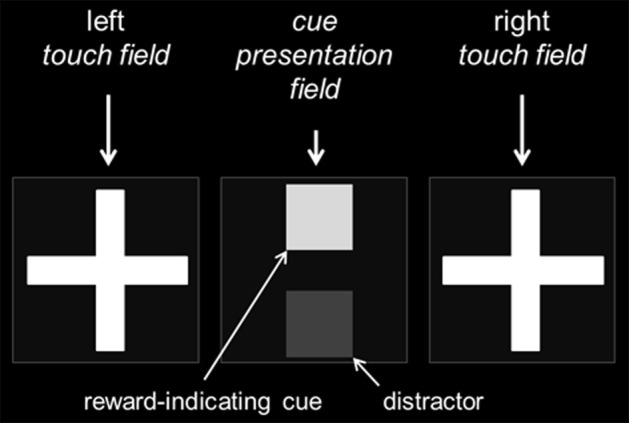Figure 2.

Organization of the cue-presenting and touch-sensitive fields. The touchscreen was covered by a black Perspex mask with three equal response windows. While the central field served as the cue presentation field, the external fields were used as touch fields during training and testing. For the performance of the “cue-position task,” a reward-indicating cue was presented either in the top or bottom position of the central cue presentation field and the mouse had to respond by touching either on the left or right cross in the touch fields (position-to-side assignment balanced across subjects). Dependent on the test condition a distractor of a different gray value could be displayed simultaneously to the reward-indicating cue in the central cue presentation field.
